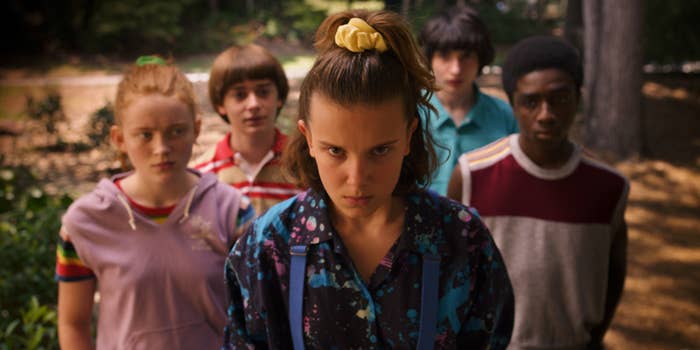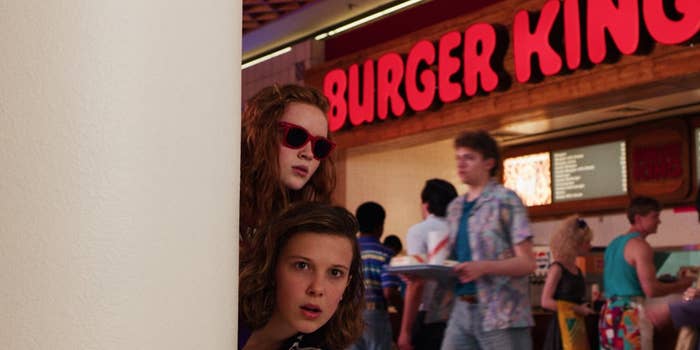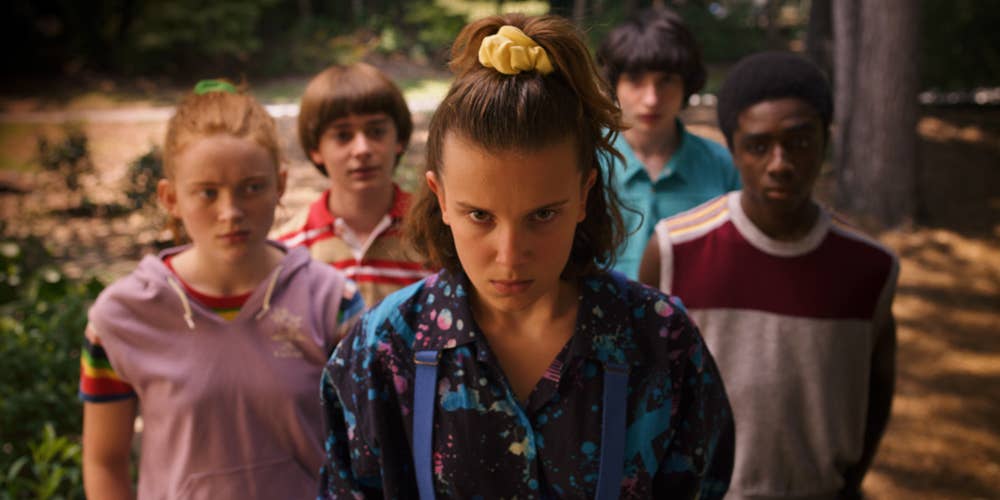
The critic embargo list for Stranger Things 3 is among the more detailed and exhaustive I’ve seen for a season of television in a while (at least since the Matthew Weiner-Mad Men days when he forbade you from even mentioning the year). It spans everything from a note about rats to episode titles, to the fate of a character audiences don’t even know yet, and a whole host of other bullet points I’d never dream of spoiling regardless because I’m not a dickhead. It’s fine, though—we don’t need to talk about the intricacies of the plot here, we need to talk about the series overall...and how this probably should’ve been the last season.
A fourth is all-but-confirmed and sure to be officially greenlit in a matter of weeks, if not days, of course. And though this may seem obvious in a post-MCU world—this is Netflix after-all, the ADD-enabling inventors of the “Skip Intro” button—definitely don’t skip the credits on episode 8. But, in the midst of the last two or three episodes as various plot strands come together to set up the most blockbuster climax the show has delivered, there’s a sense of Final Boss proceedings to everything that seemed appropriate. The last 20 minutes offer what would be a pretty solid if not outright great series finale. I’m not sure that I need or even want more, because in the first two or three installments, Stranger Things starts to show some strain.
One thing I love about Stranger Things since its blown up is the way a new season release correlates with the time of year in-show—and the way that time of year informs the season. Set around Halloween, Season 2 was able to immediately lean into a moody autumn aesthetic and was almost inherently creepy even before the plot really kicked in. This go-round is Independence Day, and it builds to incorporate all the hallmarks of a crowd-pleasing summer blockbuster like the Spielberg classics The Duffer Bros so lovingly pay homage to (although parts of this season take its influence from a certain '50s classic). But that also means that before the small town of Hawkins is turned, er, upside down, yet again and the rats do that thing, the season opens with our gang in lazy, hazy days of summer mode...and they aren’t terribly endearing.
We should relish these moments, the Hawkins gang, their horny older siblings and their arguably hornier parents (Mike’s mom is looking positively choosy anytime Billy walks by!), enjoying their last few days of carefree regular people problems. But, in watching Hopper square off with Mike (who has delightfully become kind of a little shit in the face of puberty) over Eleven, Joyce experience PTSD over dearly-departed Bob (RIP), or Hopper ignoring this to ramp up his flirting with Joyce, I kind of realized these characters don’t really shine when there isn’t any plot happening to them. Onset puberty means the kids aren’t as charming anymore—they’re all still great, but watching Mike and Lucas parse the rules of dating while Dustin and Will feel increasingly alienated by having no relationship of their own wears very thin very quickly. Nancy and Jonathan, interning for the summer at the local newspaper, start with even more of a handicap. The dialog Nancy’s chauvinist bosses sling at her feels like it was actually written in 1985; the banter and hijinks that spring from Hopper pushing things with Joyce is only better because the bar is so low.

But now, the good. The Duffers may not be above cliched writing but they do appear to have listened to feedback from Season 2. The much-maligned solo Eleven episode that implied it was a backdoor pilot for a larger conspiracy the show would circle back to is virtually ignored throughout the entire season. Better yet, they’ve doubled down on the magical co-MVP pairing that is Dustin and Steve, two characters whose light cannot be dimmed even by the doldrums of story set-up. Eleven and Max’s burgeoning friendship might be a close second—in season two Max’s character was a cipher more than anything else, but with less of a plot burden on her here, Sadie Sink really validates her position as a welcome counter of female energy. As for her brother Billy, Season 2 built him up as a fun, knowing play on the archetypal, ‘80s-movie evil older brother—a wink but poised to inflict some real damage nonetheless. That, objectively, fizzled out into a big anticlimax. Season 3 at least gives him something credible to do.
Lucas’ quick-witted, sharp-tongued younger sister Erica is back as well, at first gratuitously, then ingeniously. Which is indicative of the season overall. By episode four, the kids are scheming together, the plot strands are coming together, the creepiness hits a fever pitch, and we’re cooking with gas. Dialog that sagged when the characters had nothing to talk about turns electric when they banter during regroups. There's a small but great payoff to some Max-Eleven gir-talk from earlier in the season later when they regroup with Lucas that made me wonder if a different writers room took over. The back half of the season doesn’t quite erase or forgive the bumpy episodes before but it’s a welcome surge of all the elements that took this show from a summer dump with no fanfare to one of the biggest series on Netflix’s slate. It all builds to a conclusion that ridiculously triples the spectacle of seasons past, but in an undeniable way, one that once again left me sad to see these characters go again. It would’ve been a great ending, even moreso for the way it recovers from the early episodes’ stumbles.
The Duffer Bros pulled off a hat trick no doubt, only this time, we can see the flop sweat. It feels like we’ve gone through everything this story has to offer. It might be time for everyone involved to pack up this nostalgia-fest, do as the 1985 blockbuster the townspeople are obsessed with this season says, and get back to the future.

